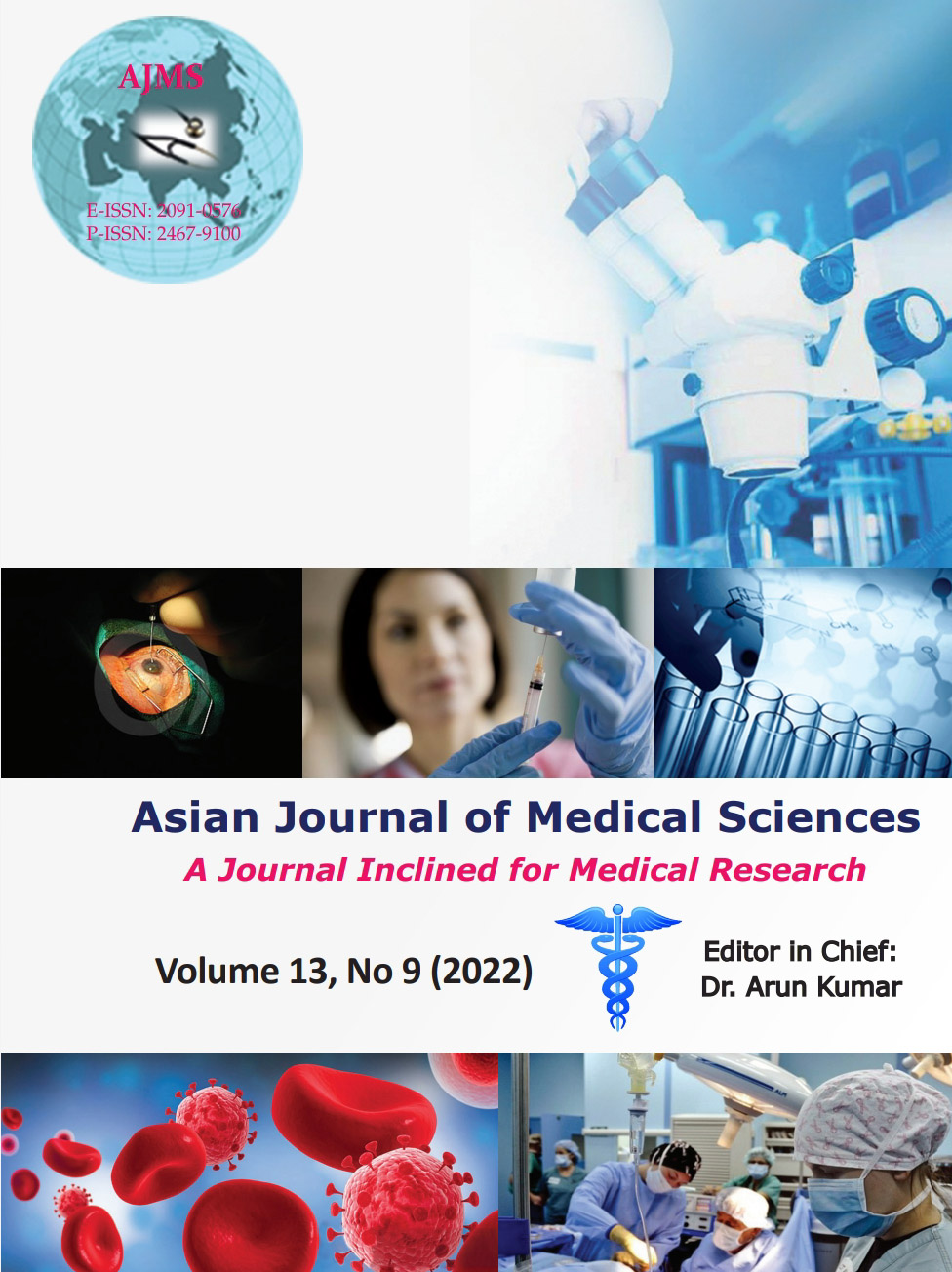To compare COVID-19 disease in elderly (young old and elderly-old) in a tertiary care center
Keywords:
COVID-19; Young-old; Elderly-old; Total leukocyte count; D-dimerAbstract
Background: SARS‐Cov‐2 is a coronavirus that caused the coronavirus disease 2019 (COVID‐19) disease outbreak in late 2019 in Wuhan China. By early 2020, the disease had rapidly spread across the world and was declared a global pandemic as a public health emergency of international concern. The mechanisms behind the behavior of SARS-cov-2 in the elderly include immunosenescence and related impaired antiviral immunity, mature immunity, and related hyper-inflammatory responses. We aim to summarize the clinical features and outcomes of elderly COVID-19 patients and compare the difference between young-old patients (60–74 years old) and elderly-old patients (≥75 years old).
Aims and Objective: (1) The aim of the study was to compare the clinical and biochemical profile of young-old patients and elderly-old COVID-19 patients.
Materials and Methods: A cross-sectional study was conducted on a total of 389 patients, during the study period from March 2021 to September 2021. Case record form with follow-up chart was used to record the duration of disease, history of treatment, and complications. Patients underwent biochemical investigations.
Results: The study includes 389 patients, 331 were not young-old and 58 were elderly-old. Mean age of young-old group 65.01±4.10 years and elderly-old group 80.74±5.35 years. Mortality in elderly-old group (29.3%) and young-old group (15.4%) with significant P=0.02. Comparing inflammatory markers such as total leucocyte count and neutrophil count are more in elderly-old than young-old COVID-19 patients, this difference is statistically significant P<0.005.
Conclusion: Elderly patients usually have chronic comorbidities and are likely to have a severe or critically severe condition. They could show atypical symptoms. Elderly-old patients tend to have more complications than young-old patients during hospitalization. Careful nursing, observation, and systemic treatment are very important in elderly patients.
Downloads
Downloads
Published
How to Cite
Issue
Section
License
Copyright (c) 2022 Asian Journal of Medical Sciences

This work is licensed under a Creative Commons Attribution-NonCommercial 4.0 International License.
Authors who publish with this journal agree to the following terms:
- The journal holds copyright and publishes the work under a Creative Commons CC-BY-NC license that permits use, distribution and reprduction in any medium, provided the original work is properly cited and is not used for commercial purposes. The journal should be recognised as the original publisher of this work.
- Authors are able to enter into separate, additional contractual arrangements for the non-exclusive distribution of the journal's published version of the work (e.g., post it to an institutional repository or publish it in a book), with an acknowledgement of its initial publication in this journal.
- Authors are permitted and encouraged to post their work online (e.g., in institutional repositories or on their website) prior to and during the submission process, as it can lead to productive exchanges, as well as earlier and greater citation of published work (See The Effect of Open Access).




